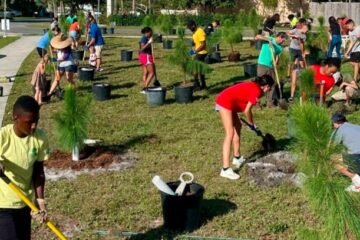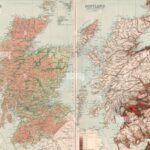As spring unfolds and warmer weather begins to take hold, many of us embrace the sunshine—but for those prone to hay fever, it signals the start of a challenging season. The first of the pollen spores start to circulate in the air, and by the time we reach April, the hay fever season in Scotland is well underway.
When Does Hay Fever Season Begin?
The hay fever season in Scotland typically kicks off in April, as trees begin to bud and release their pollen. Birch trees, in particular, are responsible for a spike in pollen levels from mid-April to mid-May. However, it’s worth noting that only about 5% of people are affected by tree pollen, meaning most of us don’t need to worry too much about this early wave.

The Worst Type of Pollen: Grass Pollen
Grass pollen is the most dreaded of all the pollens, especially when spring brings warm and sunny days. While grass pollen can begin circulating a bit earlier, its peak in Scotland typically hits in June and July, when the grass is growing rapidly and in full bloom.
But what exactly is pollen, and why does it cause such an allergic reaction? Pollen is produced by the tiny flowers on grass blades, which are easily shaken loose by the slightest breeze. These microscopic grains, which resemble tiny footballs or rugby balls, float through the air in huge numbers. When inhaled, they can trigger the classic hay fever symptoms—sneezing, itching, and congestion.
While grass pollen can be a nuisance for most of us, those prone to hay fever should especially avoid long grass. The longer the grass grows, the more pollen it will release into the air, and unfortunately, more areas are being left wild to help support local wildlife, meaning higher pollen counts.
The Best Weather for Hay Fever Sufferers
Though it may seem counterintuitive, rain can be a mixed blessing for hay fever sufferers. On the one hand, it helps wash pollen out of the air, offering some relief. On the other hand, it waters plants and can lead to even more pollen being released once the weather dries up.
Summer thunderstorms might also help by clearing the air, but the large raindrops can break down pollen into smaller particles that are easier to inhale, potentially worsening asthma symptoms. The ideal weather for hay fever sufferers is cool, cloudy, and calm, where lower temperatures slow down pollen production, and a lack of wind keeps the pollen closer to the ground.
Is Hay Fever Getting Worse?
Yes, hay fever seems to be getting worse for several reasons. Climate change has led to longer growing seasons, meaning flowers and grasses start blooming earlier and last longer. This extends the hay fever season compared to decades ago.
Pollution also plays a role, as particles in urban areas break down pollen into smaller, more easily inhaled particles. And with fewer people working outdoors, our immune systems have become less adapted to handling pollen, leaving more of us susceptible to hay fever. Recent studies suggest that nearly half of the population now experiences some form of hay fever symptoms.
Scotland’s Best Places for Hay Fever Sufferers
If you’re looking to avoid pollen, Shetland and Orkney are some of the best places to live in Scotland. These Northern Isles have less vegetation and frequent winds that blow pollen out to sea. The Hebrides also offer a pollen-free advantage, with much of the airborne pollen swept out into the Atlantic.
Higher-altitude areas in the Grampians tend to have a shorter growing season and cooler conditions, making them somewhat more bearable for hay fever sufferers as well.
Scotland’s Hay Fever Hotspots
On the other end of the spectrum, Glasgow is one of the worst places for hay fever due to its higher pollution levels. Pollution particles break down pollen into smaller pieces, making it easier to inhale, which can worsen asthma and hay fever symptoms. High-pressure systems, which often bring settled weather, can trap pollen and pollution in the air for extended periods, making the conditions even worse.
Stirling and Perth also pose challenges for hay fever sufferers. These cities are surrounded by farming areas, meaning there’s often a higher concentration of pollen in the air. Additionally, being landlocked with no coastal breezes, the air can be more polluted and heavy with allergens.
Edinburgh, Dundee, and Aberdeen are somewhat better off. These cities are located near the coast, where sea breezes help clear the air and bring in fresher, cleaner air on sunny summer days.
Key Takeaways
-
When the season begins: April marks the start of the hay fever season in Scotland, with tree pollen peaking in mid-April to mid-May and grass pollen reaching its peak in June and July.
-
Worst pollen: Grass pollen is the most troublesome, especially in early summer when it’s in full bloom.
-
Weather: Cool, calm, and cloudy days offer the best relief, while rain can help, but also trigger more pollen release when the weather clears.
-
Worsening trend: Hay fever is getting worse due to climate change, pollution, and changes in our outdoor lifestyles.
-
Best places for hay fever sufferers: Shetland, Orkney, the Hebrides, and the Grampians are among the best places for those with hay fever.
-
Worst places: Glasgow, Stirling, and Perth experience higher pollen and pollution levels, making them tough for sufferers.
Whether you’re gearing up for hay fever season or planning your escape to one of the best areas for relief, knowing what to expect can help you manage the season a little easier.


















